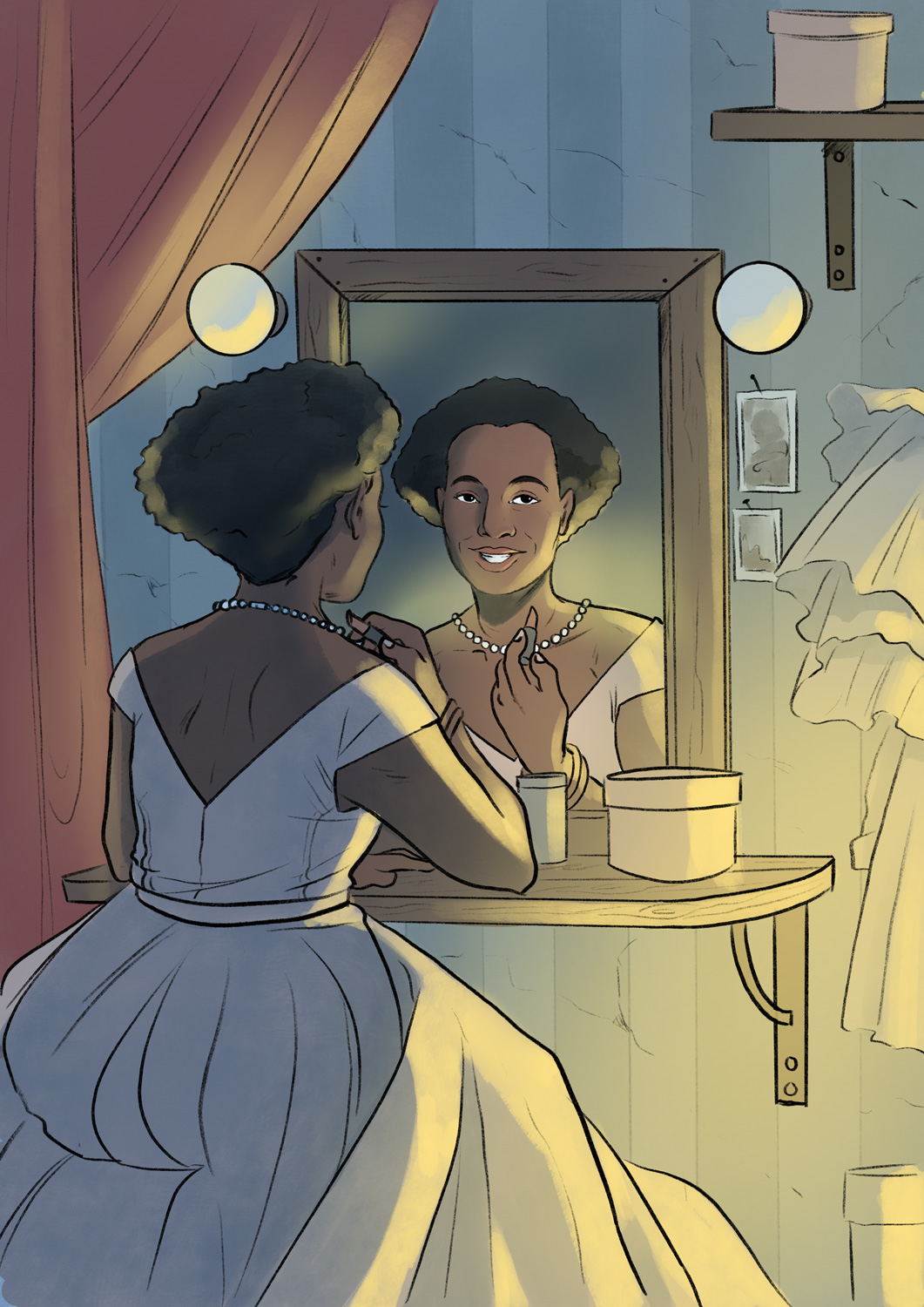
Hester Frederica Marguerite Harvey was born in South Africa in 1896. She came to Europe as a young woman and worked as a dancer and actress in Berlin. As part of the black show group 'Arizona Girls', Hester Harvey appeared in a wide range of shows at Haus Vaterland, a colossal pleasure palace at Potsdamer Platz. She also performed at Königgrätzer Strasse in smaller productions such as George Bernhard Shaw's epic drama "Back to Methuselah" in 1925. In the early 1930s, Hester toured with "Professor Doorley's Exotic Ensemble" and the Brazilian cabaret 'Tempo' and touted as based at Teatro Nacionál in Caracas, Venezuela. However, this was most likely an attempt to make the troupe more exciting to its European audience.
In the 1920s, Hester Harvey also starred in silent films in Berlin. In 'Das Floß der Toten' (The Fleet of the Dead), she played a 'native girl' in German southwest Africa (now Namibia) who, out of sheer jealousy, triggered an uprising against the German territorial rulers. Later in the 1930s, she had minor roles in a couple of Swedish film productions as a black maid to the white lead actors. "John Ericson - the Winner of Hampton Roads" (1937) was a major production in conjunction with the Swedish Delaware Anniversary. Victor Sjöström played the lead as the Swedish inventor in a story set in pre-Civil War 1850s America. In 1938, Hester Harvey starred in 'Dollar' (1938), a film based on a play by Hjalmar Bergman. It became a romantic comedy with prominent actors such as Edvin Adolphson, Ingrid Bergman, and Tutta Rolf in the lead roles. The film was well-received by contemporary critics.
Hester Harvey married a man from Gothenburg as early as 1916. They lived in a detached house in Örgryte, where she raised four children. After marriage, she was called Mrs. T. That is also the name that appeared in the obituary following her death in 1976. She is buried in Örgryte New Church Cemetery in Gothenburg.
Sources
Information about Hester Harvey was sourced from the Green, Lotz and Rye book 'Black Europe' (2013), https://tidningar.kb.se
Swedish Film Database http://www.svenskfilmdatabas.se
Örgryte Parish Archives via the Swedish National Archives' Digital Research Room https://sok.riksarkivet.se/digitala-forskarsalen